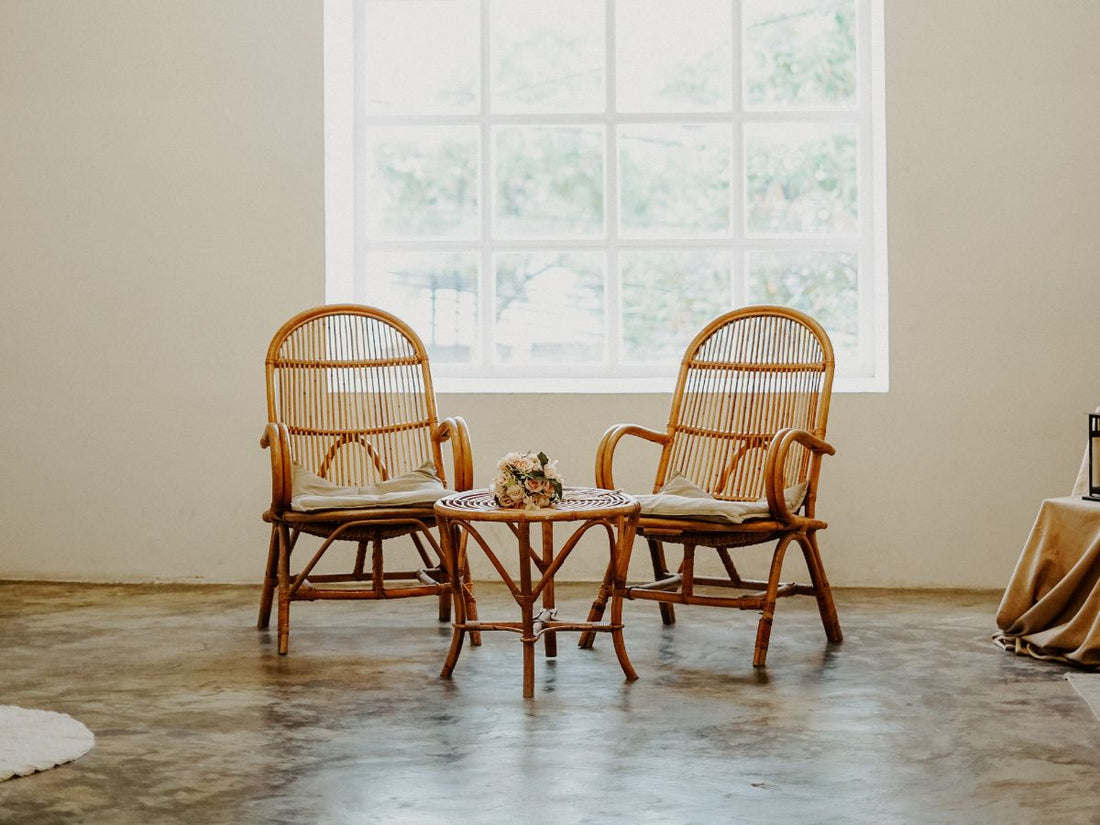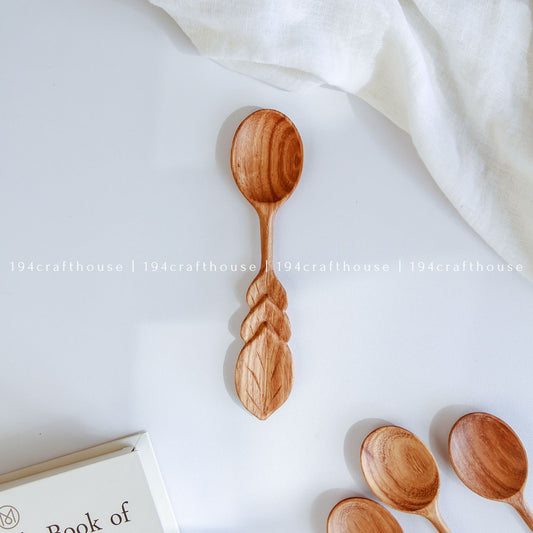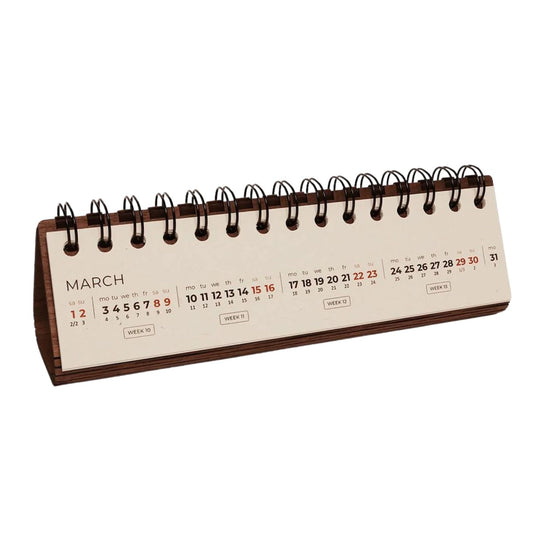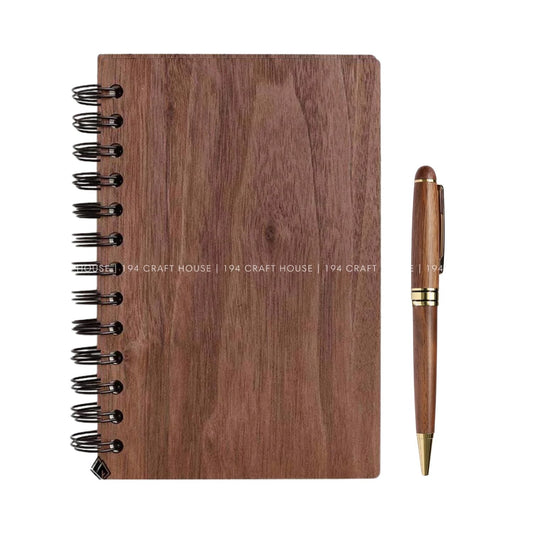Any piece of furniture is only as beautiful as it is cared for, and natural rattan is no exception. A stylish and durable addition to both interior and exterior spaces – from bedrooms and kitchens to balconies and patios, –the natural rattan is practical, sturdy and, when properly cared for, will lend your space a unique, breezy feel for years to come.
To make sure your rattan furniture goes the distance, you'll want to make sure to keep your rattan tables, lounge chairs, stools, headboards, and cabinets in pristine condition – which is easier than you think. This guide will show you how to clean, care for, and repair or restore rattan furniture for rattan furniture pieces and sets to extend their lifespan.

How to clean and care for rattan furniture?
Rattan furniture's delicate, intricate design makes it the perfect addition to coastal and bohemian décor – but all those tiny cracks in the design also collect dust and dirt, making regular care and dusting essential.
Proper cleaning ensures your furniture will last for generations to come.
There are several different cleaning methods – some of them are more suitable for natural rattan and others are meant to clean synthetic rattan furniture.
Follow these step-by-step instructions on how to clean and care for indoor and outdoor rattan furniture.
How to clean and care for indoor rattan furniture?
Indoor rattan furniture tends to get dusty, just like the rest of your house. Keep it fresh with weekly dustings and monthly damp cleanings. If your furniture is used every day, you're also likely to see accidental stains that need to be cleaned immediately.
Here are 6 main steps to cleaning indoor rattan furniture:
1. Vacuum the furniture thoroughly
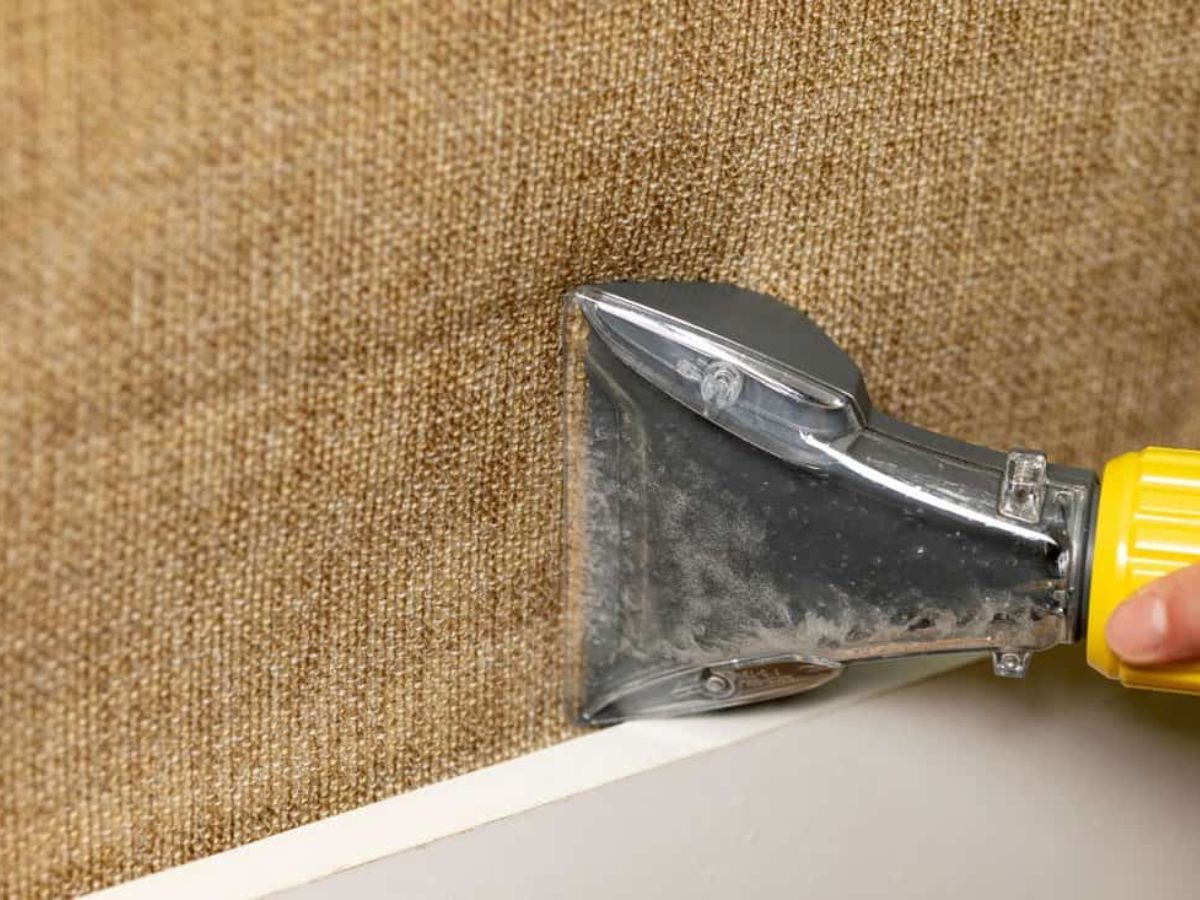
- Remove dust from the surface of the furniture using a duster or a vacuum cleaner with an upholstery brush.
- Clean under cushions with the vacuum crevice tool.
- Use compressed air to remove stubborn dust build-up.
- Use a soft-bristled toothbrush to remove dust build-up in corners.
2. Clean the furniture with mild dish soap

Fill your two-gallon bucket with lukewarm water and add half a tablespoon of dish soap. Next, grab one of your microfiber cloths and wipe down the rattan furniture to remove any caked-up dirt or grime. Be sure to get between all the cracks and crevices, and then flip the furniture upside down to clean the pieces' undersides. Pay special attention to this area as it's more likely to harbor settled dust and debris. After cleaning the furniture, rinse your cleaning cloth and wipe it down again.
3. Let the rattan furniture dry out

If the furniture's outside, place it in a covered location to dry out. Be careful of placing the furniture in an area that receives direct sun, as it can become damaged if exposed for too long.
4. Sand the rattan furniture with sandpaper

Once the furniture has dried out, take your sandpaper and lightly go over each piece from top to bottom, making sure to get in between all cracks and crevices. Use a dry cloth or a hairdryer to blow away the dust, as a lot will develop during this process. Make sure that all dust is removed from the furniture before moving to the next step.
5. Apply a single coat of paint or lacquer

Next, grab your polish and coat the furniture lightly, making sure to get between each woven strand. If you're using a spray-on lacquer, be sure to spread it evenly over the entire surface of the furniture and work your way from the top to the bottom. Also, be sure to keep the nozzle about 10 to 12 inches from the furniture to keep it from dripping. If you are using liquid lacquer, be sure to work the lacquer into the material using your microfiber cloth so that you cover it thoroughly.
6. Additional coats as needed
After applying the first coat, wait about an hour before applying the second coat.
If you are applying additional coats, make sure to wait for the previous coat to dry first.
Tips: For items made of rattan but are thin/small in size, such as rattan placemats or rattan coasters, they will easily bend after a period of not being used. To preserve them well, you can leave them in a holder or use heavy objects on their surface.
How to clean and care for outdoor rattan furniture?
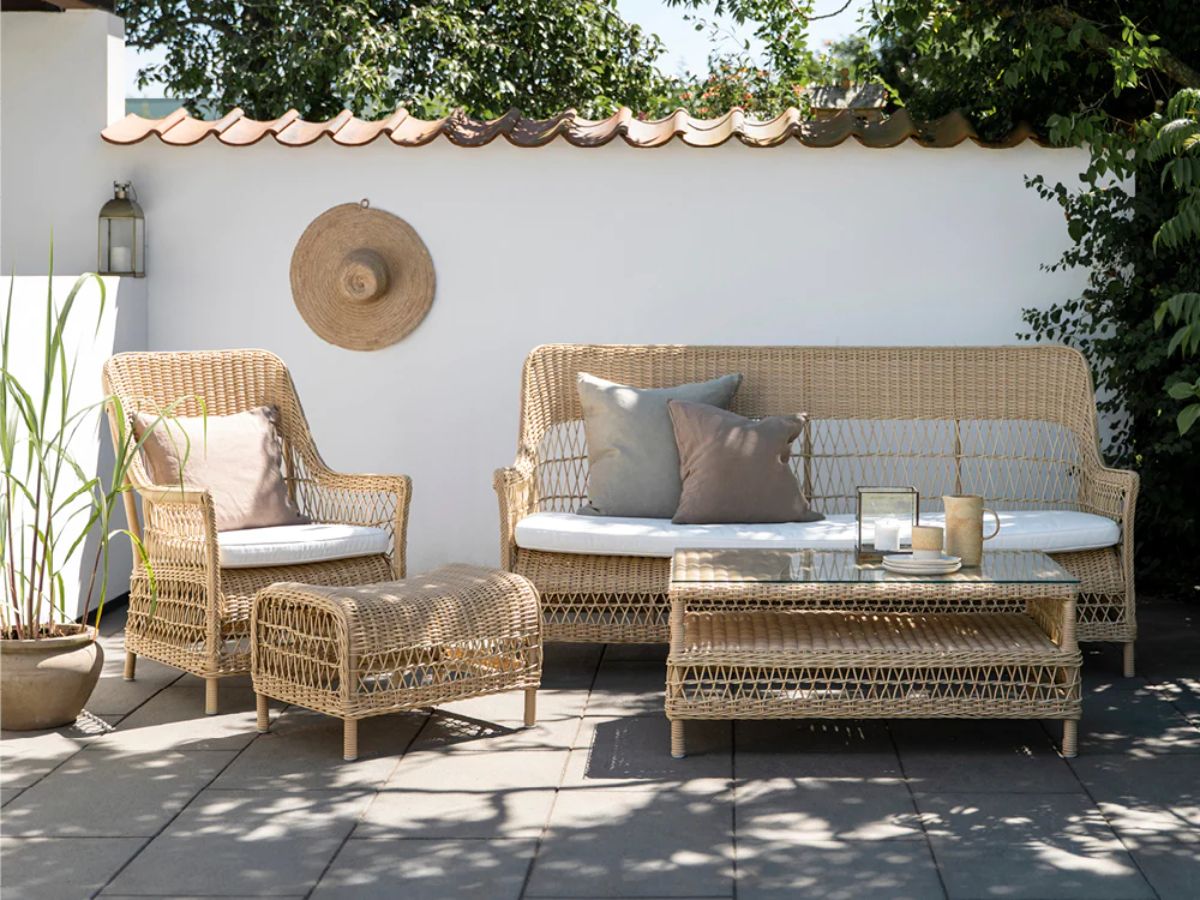
The cleaning and caring process for outdoor rattan furniture is similar, except you'll certainly see more dust and debris built up on your outdoor furniture than the indoor one. Even if you've weatherproofed your furniture or chosen synthetic rattan for your outdoor space, it still needs to be cleaned and maintained.
Here's how to clean and care for outdoor rattan furniture in 5 steps:
1. Prepare your furniture by removing cushions and other accessories and moving the piece to an open area where you can splash water freely.
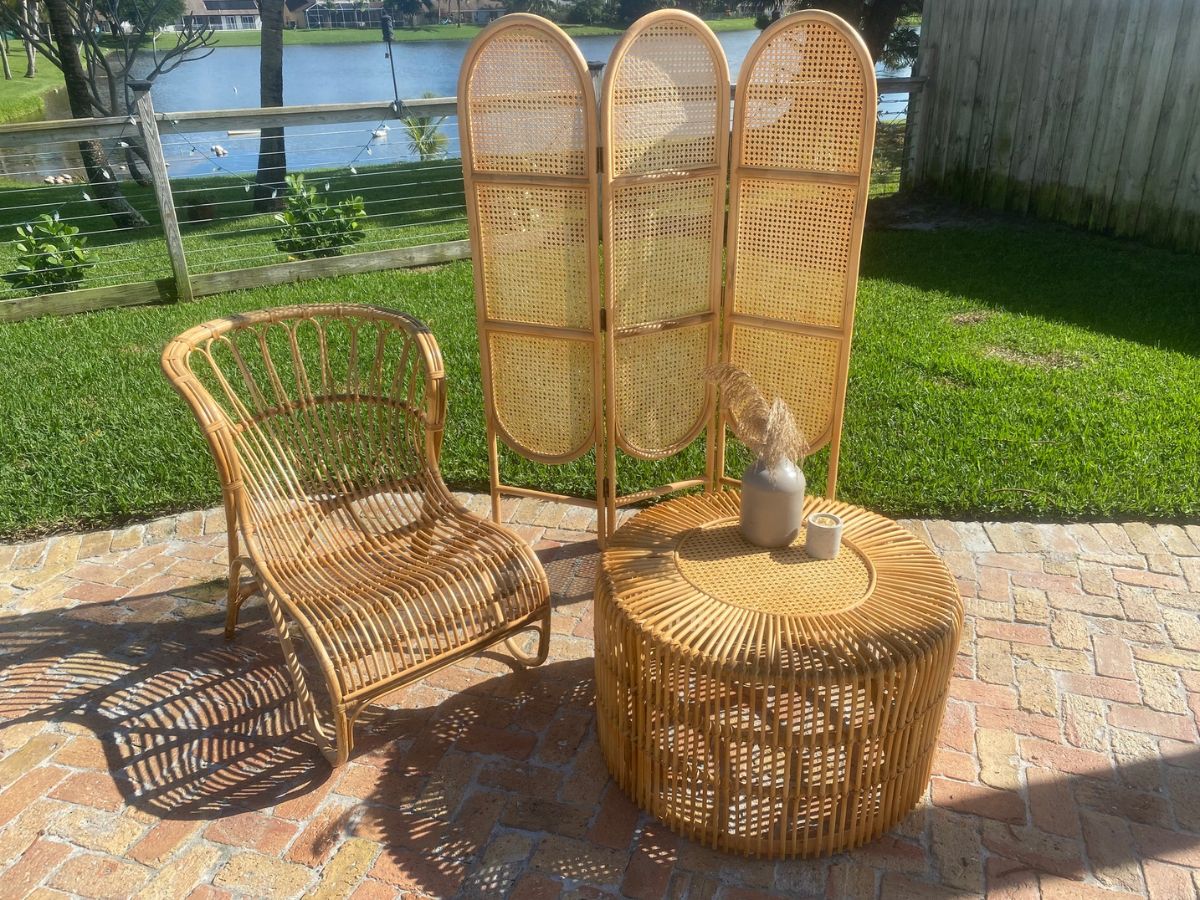
2. Use a brush or a vacuum cleaner to remove any surface dirt. Make sure to apply only moderate pressure so you don't damage the furniture's finish.
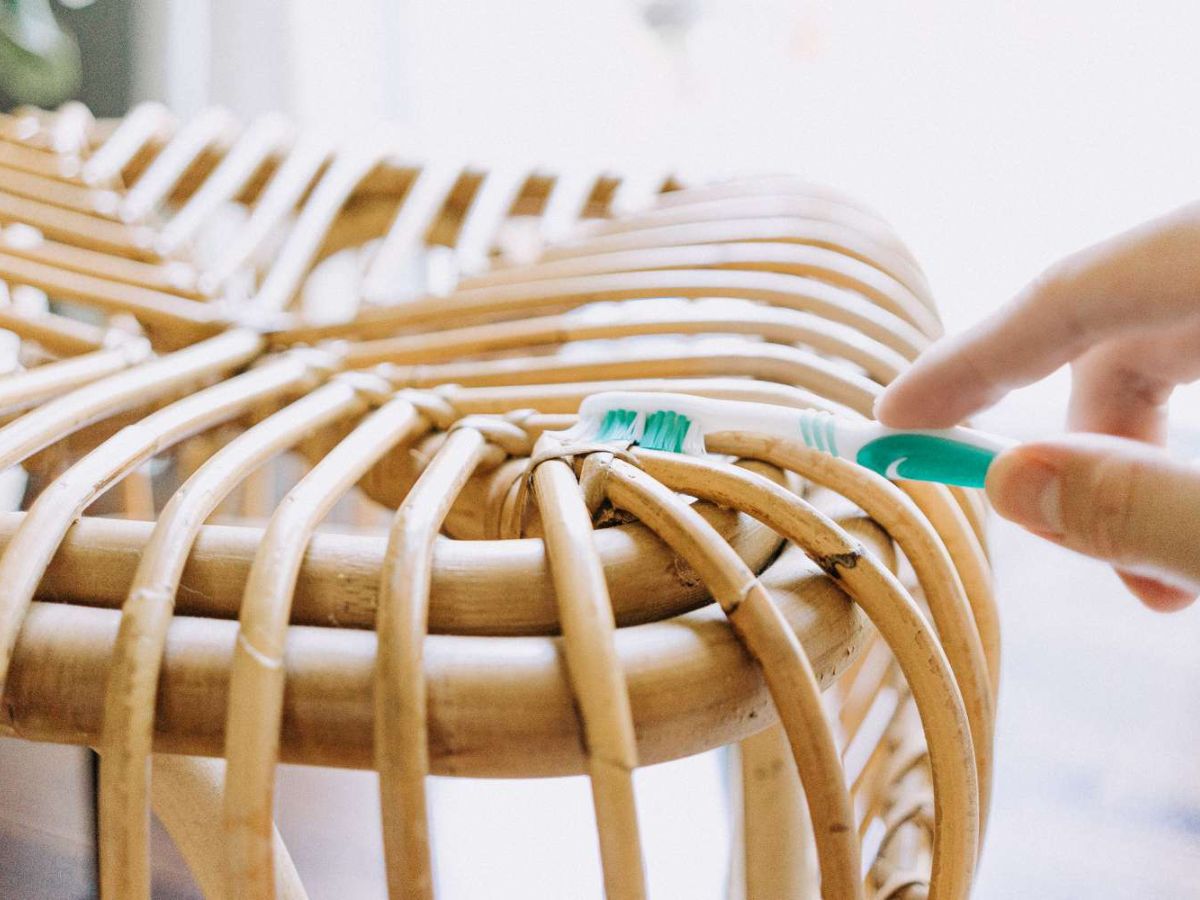
3. Mix warm water and washing liquid in a container and use a soft cloth to wipe over the furniture with the cleaning solution. With synthetic furniture, you can allow thorough soaking.
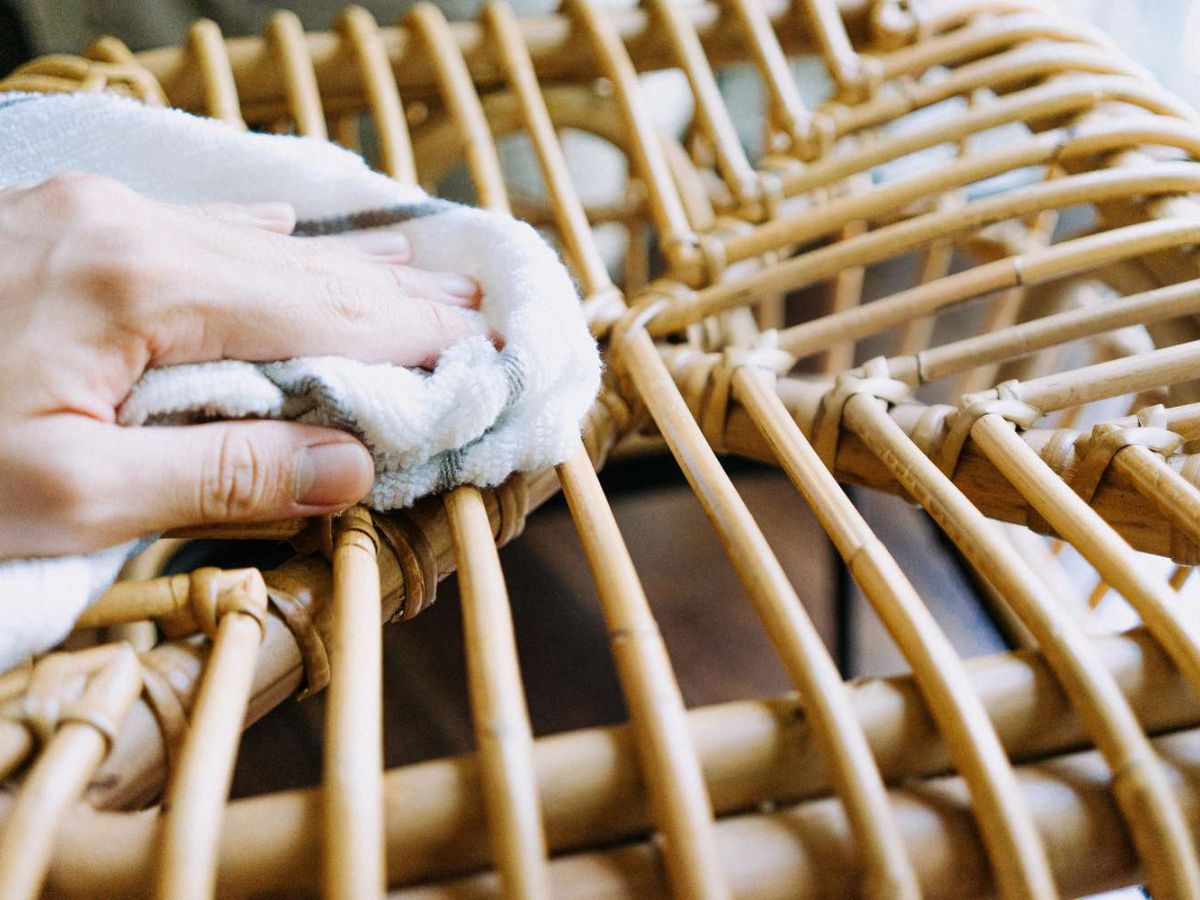
4. Rinse away the suds from the furniture with clean water using a cloth or garden hose (only suitable for synthetic furniture). Avoid using a high-pressure setting in order to avoid damage.

5. Allow the furniture to fully dry, replace the cushions, and bring your seat back to its place.
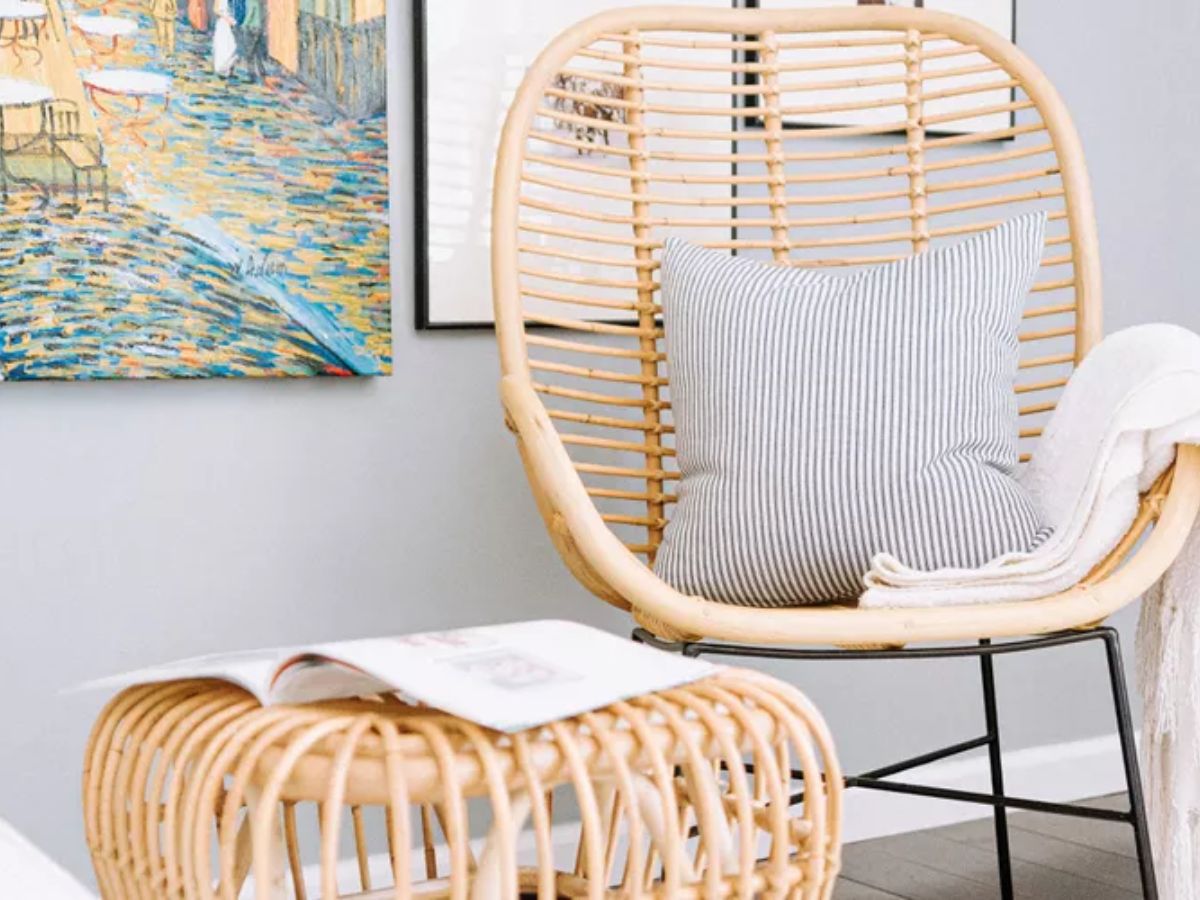
To get the very best results, we recommend this is done on a weekly basis, if you are regularly using the furniture. If not, then once a month should suffice.
How to clean mold off rattan furniture?

Rattan furniture is a beautiful and durable natural material,, unfortunately, rattan furniture is susceptive to mold and mildew when kept outdoors or in damp spaces.
If you notice black spots on it and can not remove them using the cleaning solution, then it is likely to be moldy. Not to worry – your furniture is still very salvageable.
There are 3 ways to remove it and make your furniture look new again.
Method 1: Use a solution of water and vinegar
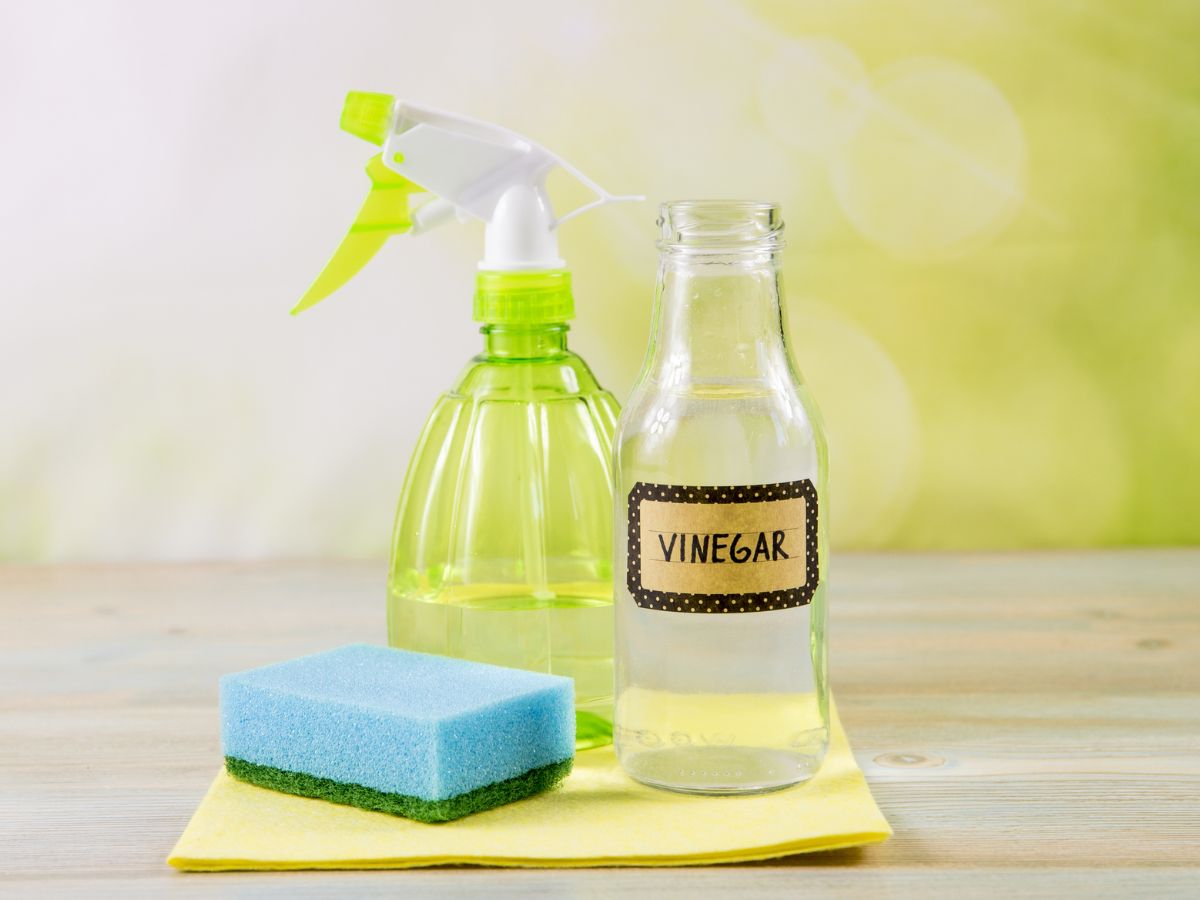
Vinegar is a natural disinfectant that can help remove mold and mildew from rattan furniture.
To use a solution of water and vinegar, follow these steps:
- Mix 1 part vinegar with 10 parts water.
- Dip a soft-bristled brush or sponge into the solution and scrub the affected area.
- Rinse the solution away with warm water.
- Allow the furniture to dry completely in a well-ventilated area.
- Vinegar is a natural disinfectant that can help remove mold and mildew from rattan furniture.
- Vinegar is a natural disinfectant that can help remove mold and mildew from rattan furniture.
Method 2: Use a solution of water and bleach

Bleach is a stronger disinfectant that can help remove stubborn mold and mildew. However, bleach can also damage rattan furniture, so use it with caution.
To use a solution of water and bleach, follow these steps:
- Mix 1 part bleach with 10 parts water.
- Dip a soft-bristled brush or sponge into the solution and scrub the affected area.
- Rinse the solution away with warm water.
- Allow the furniture to dry completely in a well-ventilated area.
- Bleach
Method 3: Use a solution of water and baking soda
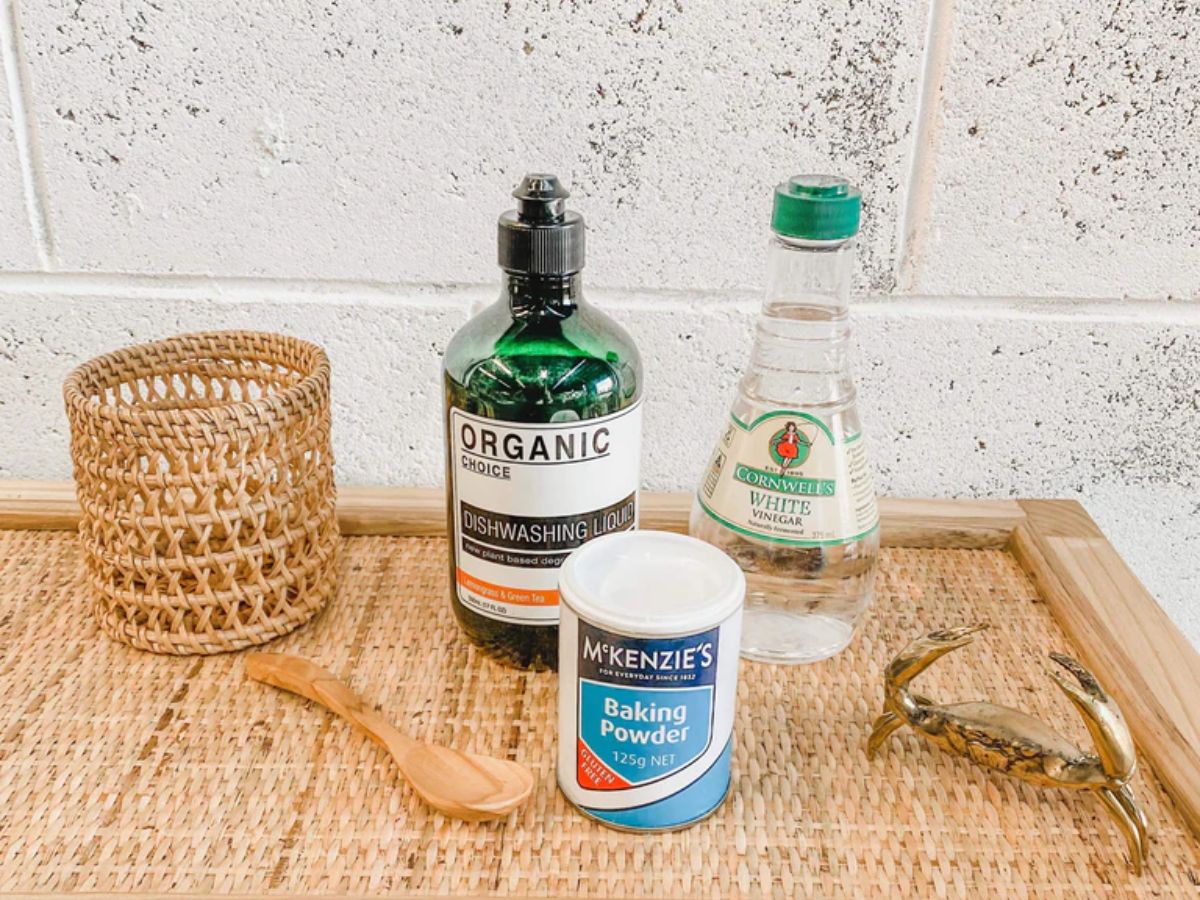
To use a solution of water and baking soda, follow these steps:
- Mix 1 part baking soda with 3 parts water.
- Apply the mixture to the affected area with a soft brush.
- Let the mixture sit for 30 minutes.
- Rinse the mixture away with warm water.
- Allow the furniture to dry completely in a well-ventilated area.
- Baking soda is a natural bleaching agent that can help remove mold and mildew from rattan furniture.
Tips for removing mold from rattan furniture
- Always wear gloves and a mask when using bleach or baking soda.
- Avoid letting the solution come into contact with your skin or eyes.
- If your rattan furniture has a glossy finish, try using a solution of water and vinegar before using bleach or baking soda.
How to prevent mold on rattan furniture
- To prevent mold on rattan furniture, keep in mind the following:
- Avoid exposing rattan furniture to rain or standing water.
- If your rattan furniture gets wet, dry it immediately.
- Avoid storing rattan furniture in damp or hot areas.
- Use an umbrella or awning to protect rattan furniture from sunlight.
5 tips to extend rattan furniture lifespan
You've got the cleaning down, but extending the life of your rattan furniture also requires proper maintenance. There are a number of simple steps you can take to keep your rattan looking new for years to come. Let's take a look at 5 easy tips that will help maintain your rattan furniture.
1. Don't leave natural rattan furniture outside
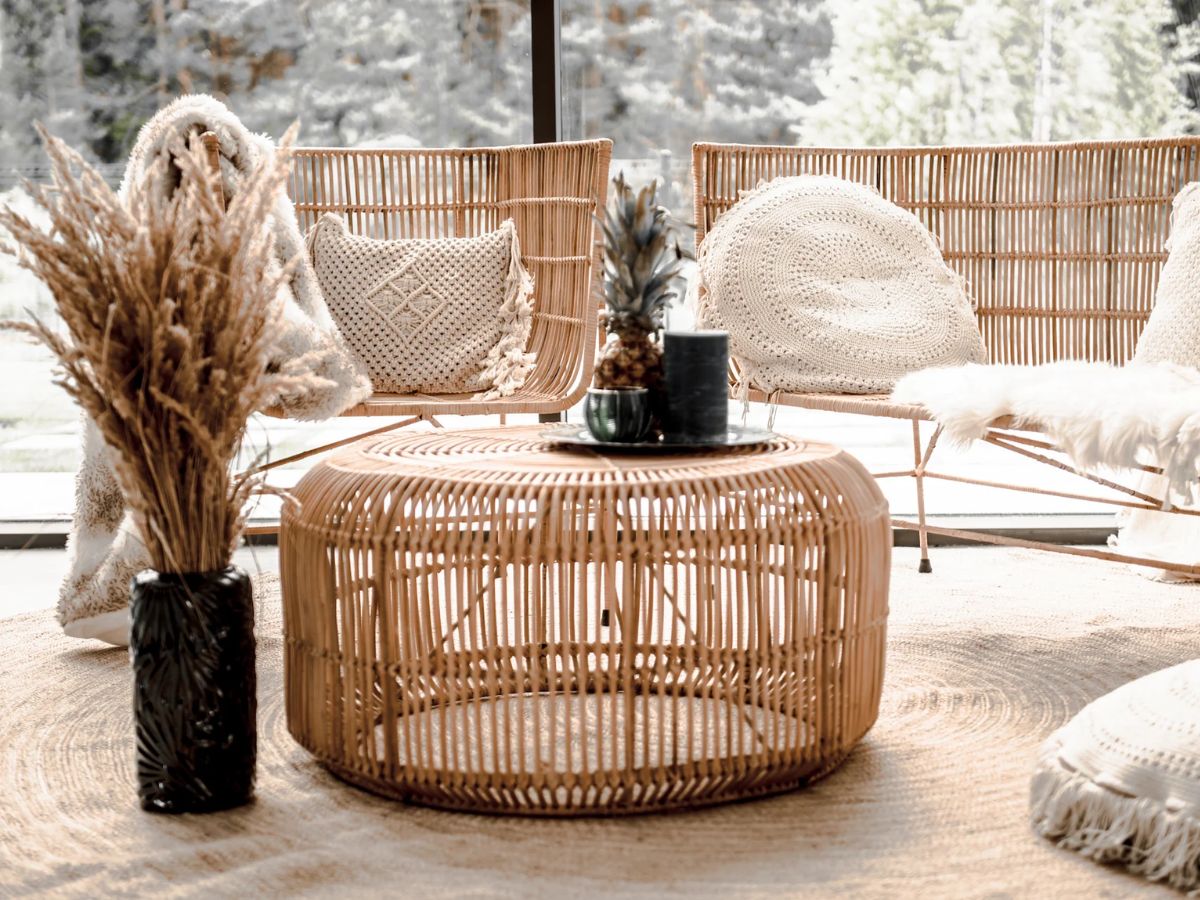
Rattan furniture is lightweight, which makes it easy to store inside after using it outside. Avoid leaving it outside for prolonged periods of time without a cover as it can get damaged in several ways.
WILL RATTAN LAST OUTSIDE?
The short answer is no. Natural rattan will not last outside if left for a long time without cover or protection. Leaving it in humid environments will result in damaged fibers and mildew, while particularly dry or cold air will dry it out and cause fibers to snap. Direct exposure to the sun will result in excessive fading. If you leave your natural rattan furniture outside, it will not last nearly as long as it is indoors.
CAN WICKER FURNITURE BE LEFT OUTSIDE?
The possibility of leaving wicker furniture outside depends on the material and its coating. There are 2 main types of wicker furniture:
Synthetic rattan wicker furniture: this kind of furniture can be left outside. Regular cleaning conditions apply.
Natural rattan wicker furniture: this type of furniture cannot be left outside for longer periods of time. Waterproofing and weatherproofing are highly recommended if used outdoors.
2. If you have to use it outside, waterproof and weatherproof your natural rattan furniture.

The most effective way to keep rattan furniture beautiful for years is to keep it indoors or on a covered patio. If you absolutely have to use it outside, we recommend making it water and weatherproof. Even if the piece had a protective layer when purchased, it will wear off over time. To prolong this protection, repaint your furniture with a new coat of varnish and enjoy it for years to come.
How to waterproof rattan furniture?
Here are the steps to waterproof rattan furniture:
- Paint the furniture. Choose paint that is intended for wicker furniture. Paint every area evenly from top to bottom and make sure to get all the nooks and crannies. If you like the color of your furniture and you don't want to alter it, skip this step.
- After you're done painting, spray varnish on top (make sure it's suitable for natural rattan). Let the first coat dry completely, then spray another coat. If you did not paint the furniture, apply a third coat.
- Allow the furniture to dry thoroughly before use.
- Repeat this process every three years.
How to weatherproof rattan furniture?
If you don't want to paint your furniture or apply varnish, using tung oil can also help weatherproof it. Keep in mind that tung oil won't protect your furniture from heavy rainfall.
Follow these steps to weatherproof rattan furniture with tung oil:
- Put the oil on a cloth and wipe the furniture. Make sure you don't leave any spots dry.
- Reapply the coating of tung oil two times a year—at the beginning and at the end of the season.
- If the chair or sofa you want waterproof and weatherproof has upholstery, use a water-repellent spray or other fabric protector. If possible, remove the cushions from the rattan frame and spray them outdoors or in a well-ventilated space.
3. Clean rattan furniture regularly
We recommend gentle weekly dusting and monthly damp cleaning of the furniture, and a thorough yearly inspection to discover any split fibers or mold and fix those right away.
4. Try to avoid dragging it so as not to split the fibers
Do not drag your rattan furniture across the floor, as this can break the fibers. Instead, lift it up when moving it, keeping an even pressure on each side. For enhanced protection, use felt pads or rubber caps on rattan furniture with cane legs.
5. If you spot mold, get rid of it immediately
If you spot mold or mildew on your rattan furniture, take care of it immediately and don't allow it to spread. Use a strong bleach solution to treat the affected areas and dry it thoroughly outdoors. Depending on the amount of mold present, it could take repeated cleanings to fully resolve the issue.
How to repair or restore rattan furniture?
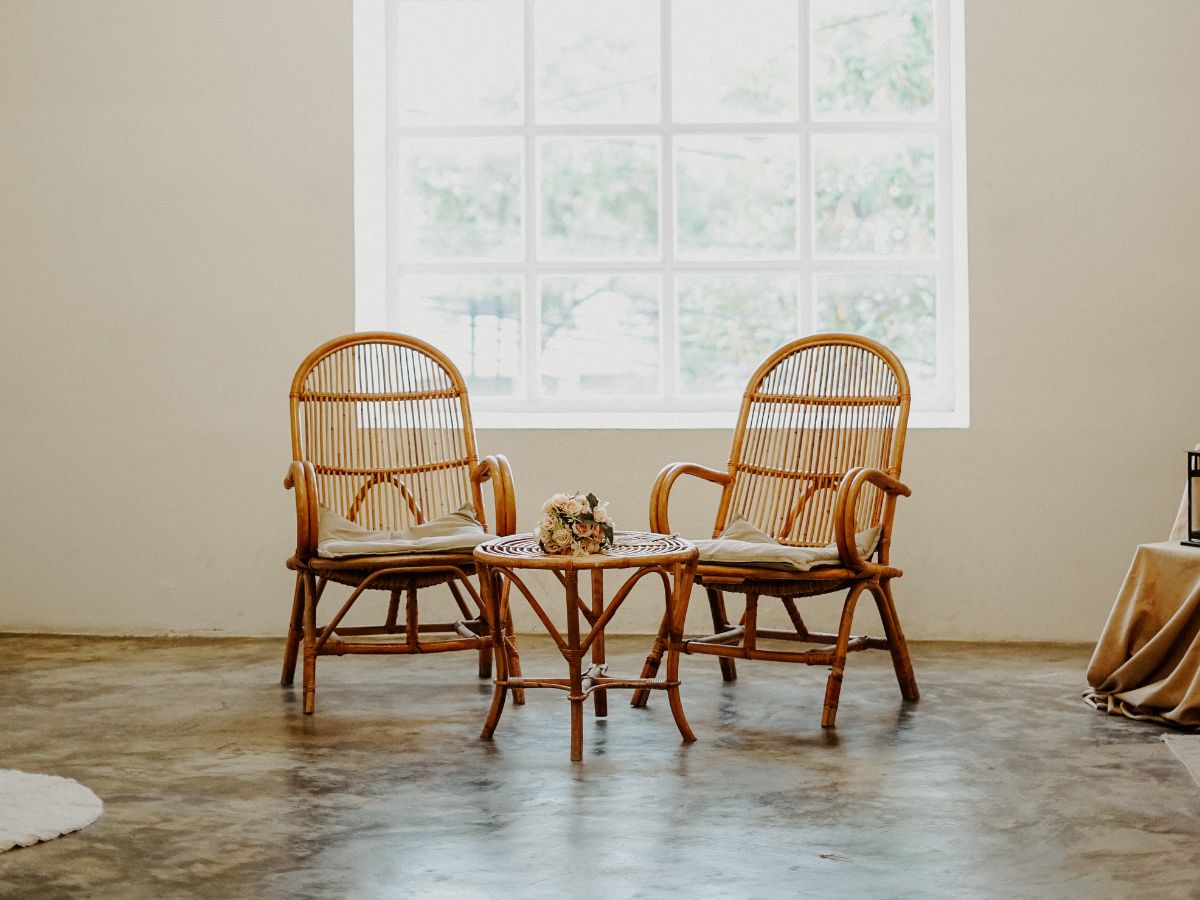
Rattan furniture restoration isn't tricky, and by following the steps below, you can restore your furniture quickly. Here are the basic ideas you'll need to start refurbishing rattan furniture:
How to fix splits and cracks in rattan furniture
Rattan can become dry, split, and cracked over the years, but it can still often be saved. We recommend applying boiled linseed oil once a year for this purpose. Use a large paintbrush and use as much oil as the rattan absorbs. Then just wipe the remainder away with a soft rag.
How to paint rattan furniture
We find that the easiest method is to use spray paint. Clean the item and let it dry. First, apply a thin primer coat, and then 2-3 thin layers of your chosen color. Be sure to allow the paint plenty of time to dry between coats.
How to refinish rattan
Another way to restore rattan furniture is to refinish it. As always, begin by cleaning the piece and letting it dry completely. Apply a 'liquid sander' as rattan is all but impossible to sand normally. If you are applying the same color finish as before, use two thin coats and allow you to dry again between coats. If you are using a different color, you may need to use substantially more layers to get the desired effect.
So now you know the basic techniques you'll need to clean, maintain, and even restore your rattan furniture. Keeping and occasionally refinishing your rattan garden furniture will significantly increase its lifespan, and make your garden seem that much more welcoming to guests and your own family alike.
So, now you know a bit more about rattan in general, and what to look for when buying rattan furniture. Choose wisely, though, as a good set of rattan furniture will last you many years!

